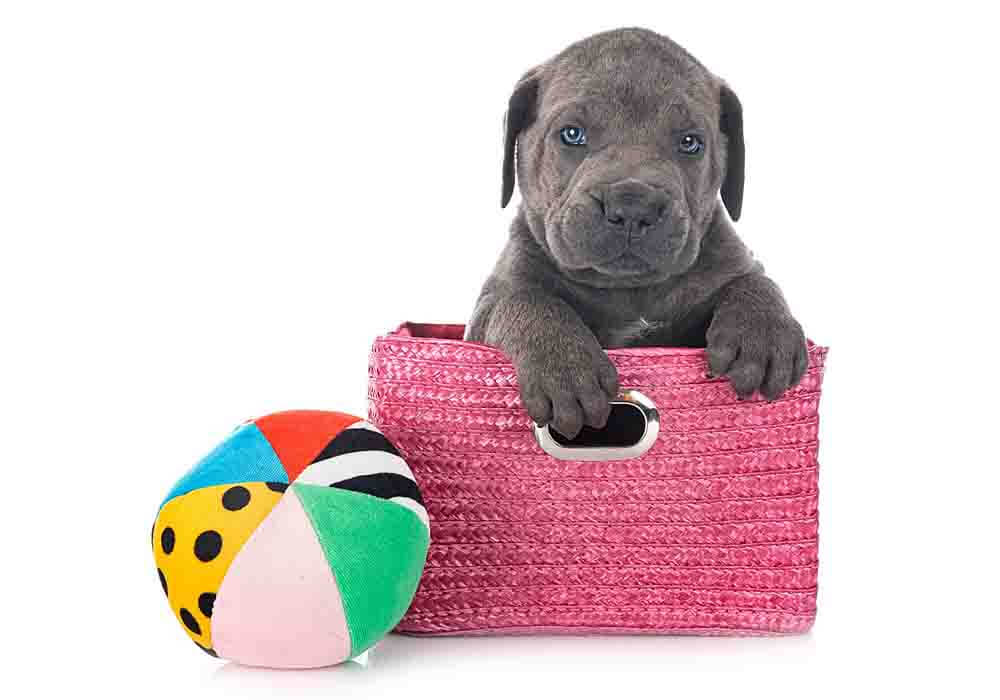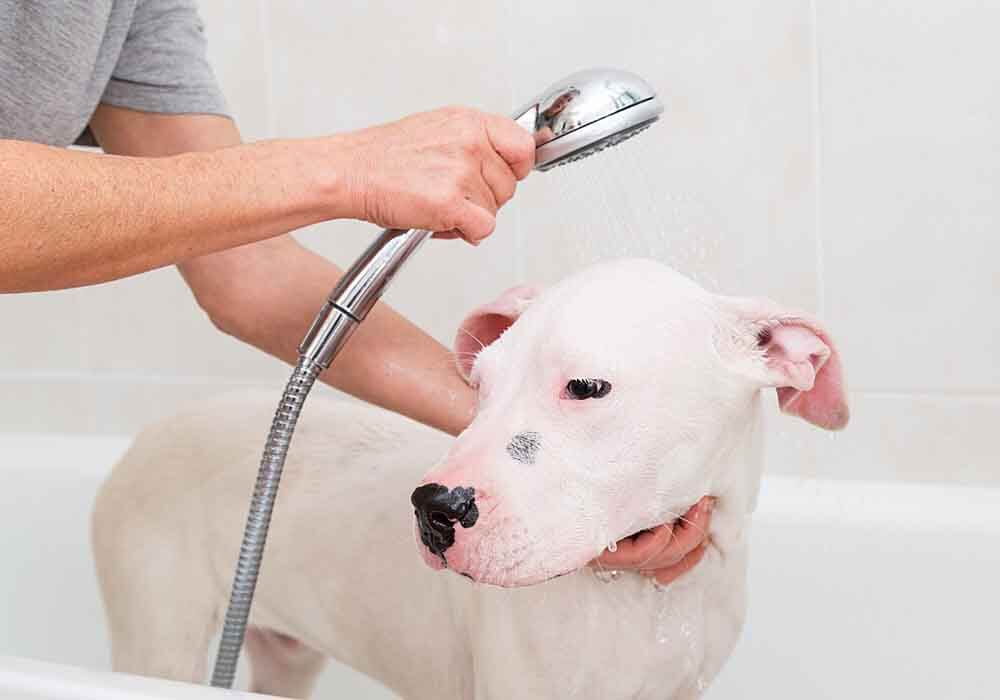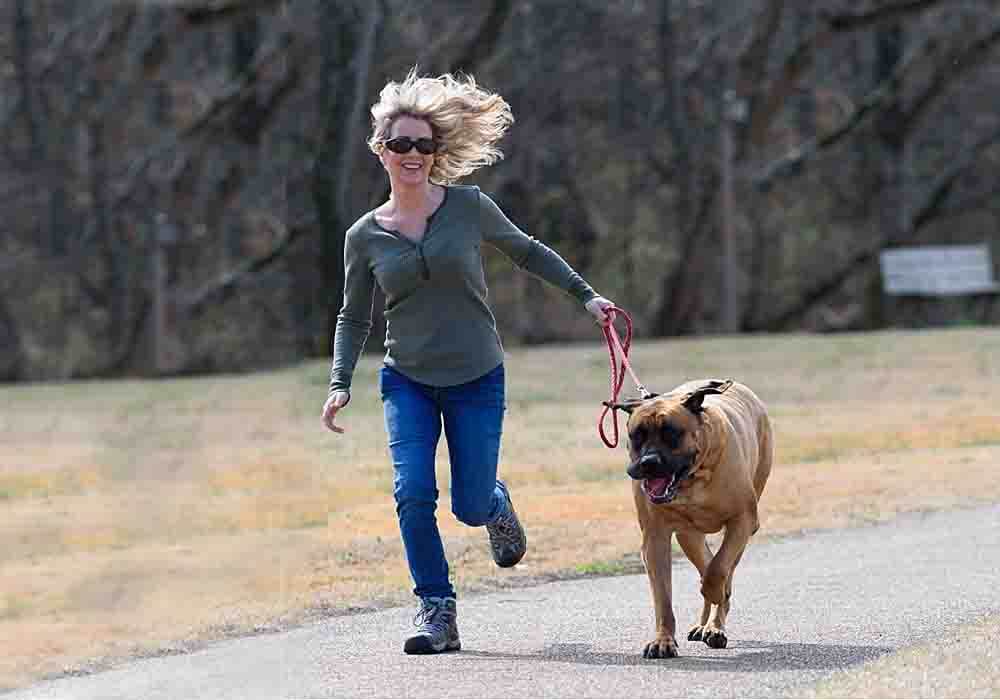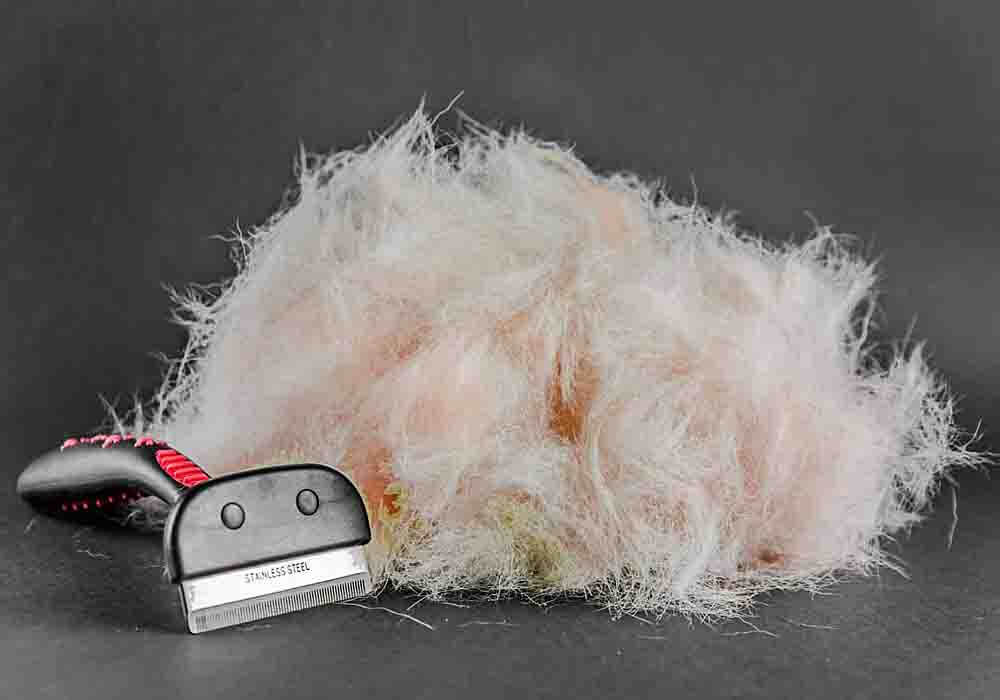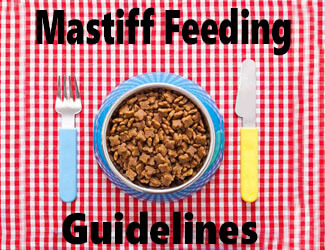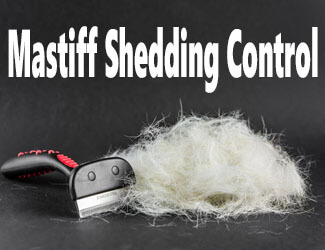8 Tips For New Mastiff Owners
A Helpful Guide To Know What To Expect
by Ken Alden
Because the Mastiff is an incredibly large dog that can reach up to 200 pounds, most people may think he is an intimidating canine, but this couldn’t be further from the truth. This adorable, black-masked canine is known for being a gentle giant. If you have recently added a Mastiff to your family, you’re going to want to know all you can about raising and taking care of him.
8 Tips For New Mastiff Owners...
1. Mastiffs require a good deal of attention.
2. The Mastiff’s short coat sheds.
3. Mastiffs need obedience training.
4. Socialize your Mastiff as a puppy.
5. Be careful not to overfeed your Mastiff.
6. Mastiffs tend to slobber a lot.
7. Exercise your Mastiff – but not too much.
8. Mastiffs are very sensitive.
Having a Mastiff in your home is undeniably one of the best choices you could ever make. However, there are some special things to remember when raising one of these lovable dogs. Read on to discover what exactly a Mastiff is and how these eight tips for new Mastiff owners can help you out. Read More Below...
Pro-tip: Ever try lifting a Mastiff? Their weight can hurt not only your back but their joints when they hop down from cars, sofas or even your bed. To protect your back and theirs check out the best Mastiff ramps on Amazon.com now.
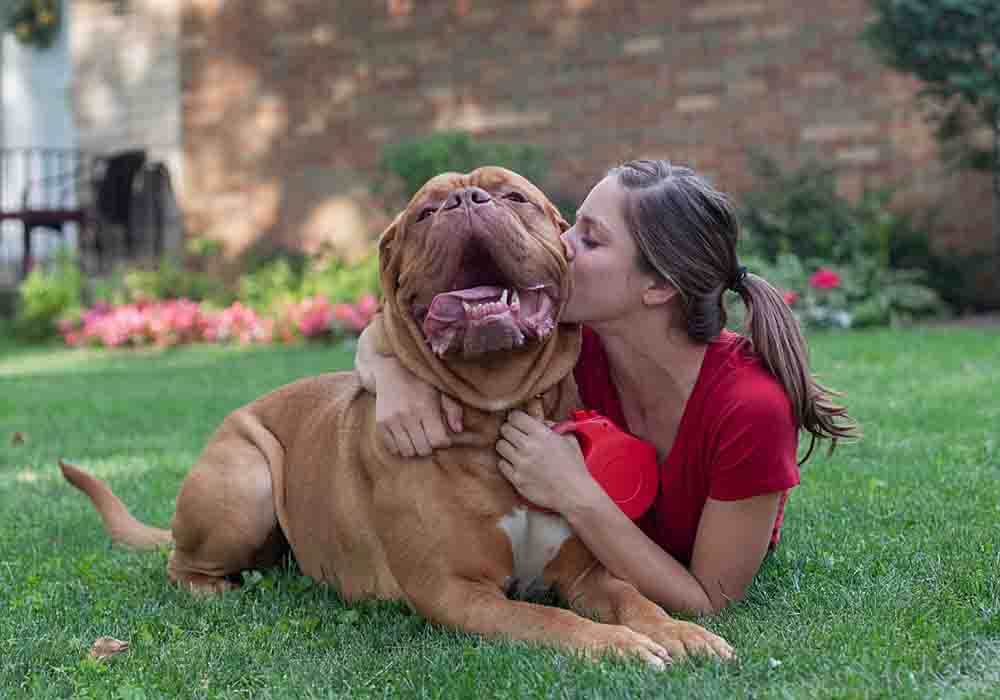
What Is A Mastiff?
The American Kennel Club describes the Mastiff, also called an English Mastiff or an Old English Mastiff, as a larger-than-life breed that has a unique face featuring a black mask and droopy ears. Adult Mastiffs can weigh around 200 pounds, making them one of the heaviest dog breeds in the world.
The breed’s colossal size may leave some pet owners wondering if a Mastiff is the right choice for their family. The simple answer is yes; Mastiffs are a wonderful pet option for families, even those who have small children. Why? The Mastiff’s temperament is very calm, snuggly, lazy, and protective.
The Mastiff is known for loving to
lounge around and hang out with his family. Sometimes it can be a challenge to get your Mastiff up to walk
around the block, but it’s still necessary. They love to snuggle and will
always be protective and loyal to their families. However, although he may seem
‘large and in charge,’ the Mastiff isn’t aggressive with his protection but his
looks and size can be intimidating.
Eight Tips for New Mastiff Owners
Before getting any pet, you should
always do your research to make sure that you are equipped to take care of
them. Mastiffs may seem to be difficult to care for because they are massive in
size, but, in actuality, they are just as loving as most other dogs. The
following eight tips tell you more about raising a Mastiff.
1. The Mastiff Requires a Good Deal of Attention
If you think that you can leave your Mastiff in the yard to scare off potential intruders and he will be okay with it, then think again. Just because the Mastiff breed is larger than others, and he may seem intimidating, the Mastiff’s protective nature isn’t assertive nor aggressive. He will alert his owners of someone new approaching the door, but he won’t attack. tips for new mastiff owners
Keep in mind that while the Mastiff is known for being loyal and protective, he won’t do it unless he feels as if he is part of the family. Another quality of the Mastiff is that he doesn’t like to be alone for long periods. He is very easy to get along with. For the most part, he is a quiet dog that loves to snuggle up with his owners and enjoy lounging on the couch.
Leaving your Mastiff alone is never a good idea. Mastiffs can become upset and depressed without plenty of social interaction. This doesn’t mean you need to go completely out of your way and do something grand with your dog constantly. Simply spending time with him lying around the house watching television will make him a happy doggy.
Pro-tip: Mastiff anxiety, aggression, destructive chewing, jumping up, fearfulness, and other behaviors can be controlled with the right training program.
Here’s a great course that
addresses these issues along with many other dog training basics: Check it out now!
2. The Mastiff’s Short Coat Sheds
Some pet owners fear the dreaded shedding that comes with owning a dog, and you won’t be free from shedding when you have a Mastiff. The Mastiff’s short coat tends to shed fairly regularly, but there are many ways you can reduce the amount that your dog sheds. You can reduce shedding by giving your Mastiff proper grooming regularly.
When it comes to grooming, the best thing you can do for your Mastiff is to brush his coat regularly. You can do this every day if you want to. This practice will get rid of excess hair that would otherwise end up on the floor. It will also get rid of dead skin and dust that might be building up in his coat.
Brushing your Mastiff’s coat isn’t only good for reducing the amount of shedding. Brushing your Mastiff’s coat will also help to reduce the risk of potential infections and mites. It’s a good idea to run a brush through your Mastiff’s fur as often as possible. It keeps him happy and healthy and keeps your floors free of hair.
A few other handy tips when grooming your Mastiff...
- Clip your Mastiff’s nails at least once a week. Clipped nails help to reduce the risk of anyone accidentally getting clawed by your pal, who is just trying to share his love.
- Some Mastiffs are prone to eye goop. If your Mastiff is one of them,
then do him a favor and remove the eye goop for him because he cannot do
it himself. Use a damp washcloth or paper towel to remove the goop
gently.
- You need to clean your Mastiff’s ears. The Mastiff has big, droopy ears that are adorable, but also prone to infections if not cleaned regularly. Take a washcloth to remove wax that may have built up in the ears.
- Bathe your Mastiff every few weeks. Your Mastiff doesn’t need to bathe more often than this unless he gets very dirty. If he decided to play in a mud puddle, bathe him. If he is relatively clean, then you can save bath time for every few weeks. Always use dog shampoo. Bathing will also help to reduce the amount of shedding your dog does.
Here's Some Additional Helpful Pages...
Mastiff Shedding Control....Here's multiple tips to help reduce this problem
How To Groom A Mastiff....Learn tips on keeping your Mastiff clean from nose to toes.
3. Mastiffs Need Obedience Training
If there is one thing that every Mastiff owner needs to remember, it’s that Mastiffs must be trained. When it comes to obedience training for the Mastiff, the main goal is to teach them how to interact with other people without jumping on them and how to walk on a leash. tips for new mastiff owners
The need for training is simply because this large breed can be a bit too friendly with the people around them, which could lead to them jumping up on people. A 200-pound dog jumping up on someone – especially a child – can be disastrous. Your Mastiff could end up accidentally hurting someone just because they were trying to show them some love.
Furthermore, Mastiffs should be trained to walk on a leash from a young age. Keep in mind that you need to show your Mastiff that you are in charge when it comes to going for a walk. Your Mastiff is a large canine that can certainly pull you around for a walk, so always make sure your Mastiff knows to follow your directions when he’s on his leash.
While Mastiffs can be a little bit on the stubborn side at times, the good news is Mastiffs are pretty easy to potty train. As long as you are diligent and persistent with your training, your puppy should have no trouble figuring out where he is supposed to go and, more importantly, where he is not supposed to go.
4. Socialize Your Mastiff As A Puppy
Another thing every Mastiff owner needs to do with their Mastiff puppy is to socialize them at a very young age. This is perhaps the most important piece of advice for a new Mastiff owner. Proper socializing is key to building the Mastiff’s temperament and making sure he is the lovable, snuggly dog he is meant to be.
A Mastiff is a very protective dog by nature. While you might think that socializing your Mastiff as a puppy will lead him to be less protective, it’s exactly the opposite. Socializing your Mastiff as a puppy will make him a better protector.
He will become a great protector because your Mastiff will learn body language and be able to ‘read’ people better. He will learn how to interact with people of all shapes and sizes. Start socializing your Mastiff as early as seven weeks to make sure he is comfortable around all kinds of people.

Socialization can benefit mastiffs at any age or stage. Here's a few great socialization ideas that your pooch will love.
Pro-tip: Mastiff's (and their owners) love dog crates…and for good reasons. Crates keep dogs from mischief while you're away, are perfect for house training, for traveling by car, and provide the dog a place to de-stress. Check out the best Mastiff crates on Amazon.com now.
5. Be Careful Not To Overfeed Your Mastiff
Sometimes, a Mastiff owner may believe that their Mastiff requires an excessive amount of food to keep up with their big size, but this is not the case. The Mastiff will reach his genetically predetermined size as long as he is getting enough food.
One thing you should know about the Mastiff’s eating habits is that he likes to scarf his food down as quickly as possible. Unfortunately, this sets the Mastiff up for serious discomfort. When the Mastiff eats too quickly, he ends up with uncomfortable bloating and tummy distress.
To avoid this situation, make sure you spread out your dog’s meals throughout the day and never offer too much food at a time. Treats should also be kept to a minimum since too much food will only make his stomach uncomfortable, and he may end up struggling with weight issues. tips for new mastiff owners
Always make sure you are buying top-quality dog food that is specifically designed for Mastiffs. A proper diet will ensure that your Mastiff grows big and strong, and, hopefully, will reduce the chances of tummy discomfort and GI problems.
Here's Some Additional Helpful Pages...
Best Mastiff Dog Foods...We review many of the tastiest wet and dry foods
Mastiff Feeding Guidelines...We take the guesswork out of feeding your Mastiff
How To Feed A Mastiff Puppy...A great article more geared to puppies
6. Mastiffs Tend to Slobber A Lot
One thing you will find out fairly quickly after getting a Mastiff is he tends to slobber, and he tends to slobber a lot. Needless to say, if you are not fond of slobber and don’t want to clean up slobber regularly, then the Mastiff may not be the dog for you.
While the Mastiff is known for slobbering heavily, there are ways to control the slobbering. The best thing to do is always wipe your Mastiff’s mouth after he is done taking a drink of water or eating a bowl of food. Most of the slobbering is likely to happen after your Mastiff eats or drinks, so don’t neglect to wipe his mouth.
You may find yourself wiping his mouth a few times during the day, regardless of whether he has eaten or drank, and that is perfectly normal. It simply means there is less of a chance that slobber will end up on your couch, bed, floor, and other unwanted areas.
Here's Some Additional Helpful Pages...
How much does your mastiff drool?...Where does your breed rank?
Mastiff drool control...You can't stop it but you can control it, learn what it takes.
7. Exercise Your Mastiff – But Not Too Much
Your big, lovable canine will laze around the house all day if you let him, but this is not good for his health. While he is a lazy, snuggly canine that will cuddle with you while watching movies all day, you still need to make sure that he is getting enough exercise for his health and happiness.
However, Animal Hub warns that, while a Mastiff needs exercise, he should not be over-exercised. This enormous canine can overheat quickly, so taking care to not over-exercise him – even when he is a small puppy – is imperative.
Activities with your Mastiff to ensure he gets enough exercise include...
● A short walk that lasts around 20 minutes in total.
● A leisurely hike on terrain that isn’t too steep or mountainous.
● A game of catch or fetch that lasts around 15 minutes.
● A quick visit to the dog park. tips for new mastiff owners
The key is to make the exercise short and sweet. If the weather exceeds 80 degrees, it’s best to exercise your Mastiff indoors with a bit of playtime. Mastiffs have a high tendency to overheat, and their short muzzles make it difficult to breathe in the heat.
Also, don’t think that your Mastiff puppy is ready for more exercise just because he appears to be fully grown. Mastiff puppies less than one year of age should not be regularly exercised because they can experience problems with their bone development.
So, even though the Mastiff is a large dog, it doesn’t mean he has large exercise needs. Some other ‘larger’ dogs, such as the Husky and German Shepherd, may require lots of exercises, but your Mastiff doesn’t. He is completely fine with a quick walk before hopping back onto the couch for cuddles.

Exercise Needs For Mastiffs...This article further addresses their needs and offers some exercise ideas. The info on this page is a great way to prevent your Mastiff from becoming overweight.
8. Mastiffs Are Very Sensitive
You would think that, because of his enormous size, the Mastiff would be able to hold his own and not get sad at the slightest thing his owner says. However, this is not the case. The Mastiff is a very sensitive dog breed, and he will become upset if his owner is too rough or harsh with him. You should always make sure that you are treating your Mastiff nicely.
Does that mean you should let your Mastiff walk all over you? Of course, not! You should use a firm and corrective tone when addressing bad behavior, especially when you are trying to train a Mastiff puppy. This voice level is a respectable one to which your Mastiff will respond well. Yelling, on the other hand, will only make him sensitive and less likely to obey.
You should also never hit your Mastiff for any reason. Yelling, as well as hitting, can cause serious adverse effects on your dog. One of the most problematic issues that can arise is the development of anxiety in your Mastiff. This nervousness can affect many things – from your Mastiff’s daily temperament to how he reacts to people.
Make sure that you praise your Mastiff regularly when he does something good, like obeying commands. Mastiffs love treats, just like any other dog, and treats will give him some encouragement and incentive to keep doing positive things.
Remember, though, that the Mastiff can be a bit stubborn at times. You should always make sure you are patient when trying to train your Mastiff. It may take a little while for your dog to catch on to the positive behavior you are asking of him. Once he does, he will be an obedient dog who is loyal and loving.
Tips For New Mastiff Owners...Final Thoughts
Mastiffs are lovable, gentle giants who would be great additions to any family. They love to cuddle up with their loved ones and spend time with them, and they don’t need much exercise. Always remember to be calm and gentle with your Mastiff because they are a sensitive breed.
Mastiffs also need to be fed a proper diet and be groomed regularly. Remember that all Mastiffs will require obedience training and socialization, and both should be introduced when they are very young. Without this training, Mastiffs can easily forget their size when being friendly, which can result in unfortunate accidents.

You've come this far, now your probably wondering how long will my Mastiff grow and live? In this article we explain what you can expect growth and life expectancy wise from your specific mastiff breed.
Return to the top of this Tips For New Mastiff Owners page

About the Author...
Ken Alden, a dedicated Mastiff owner for over eight years, is acclaimed for his expertise in care, grooming, and training. Read more About Me and my dog Shadow.
- Mastiff Guide Home ›
- Mastiff Dog Breed Info ›
- Tips For New Mastiff Owners

